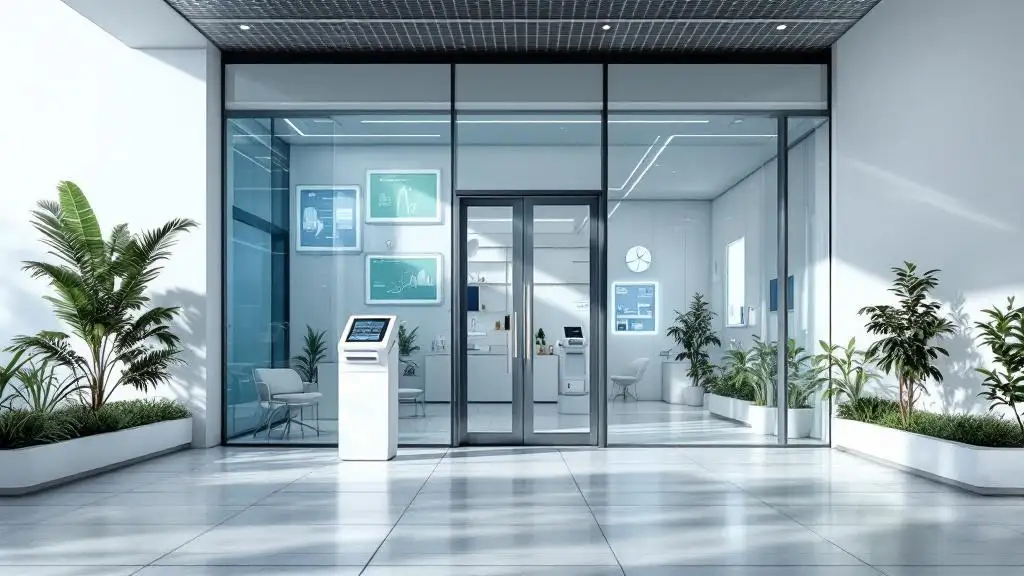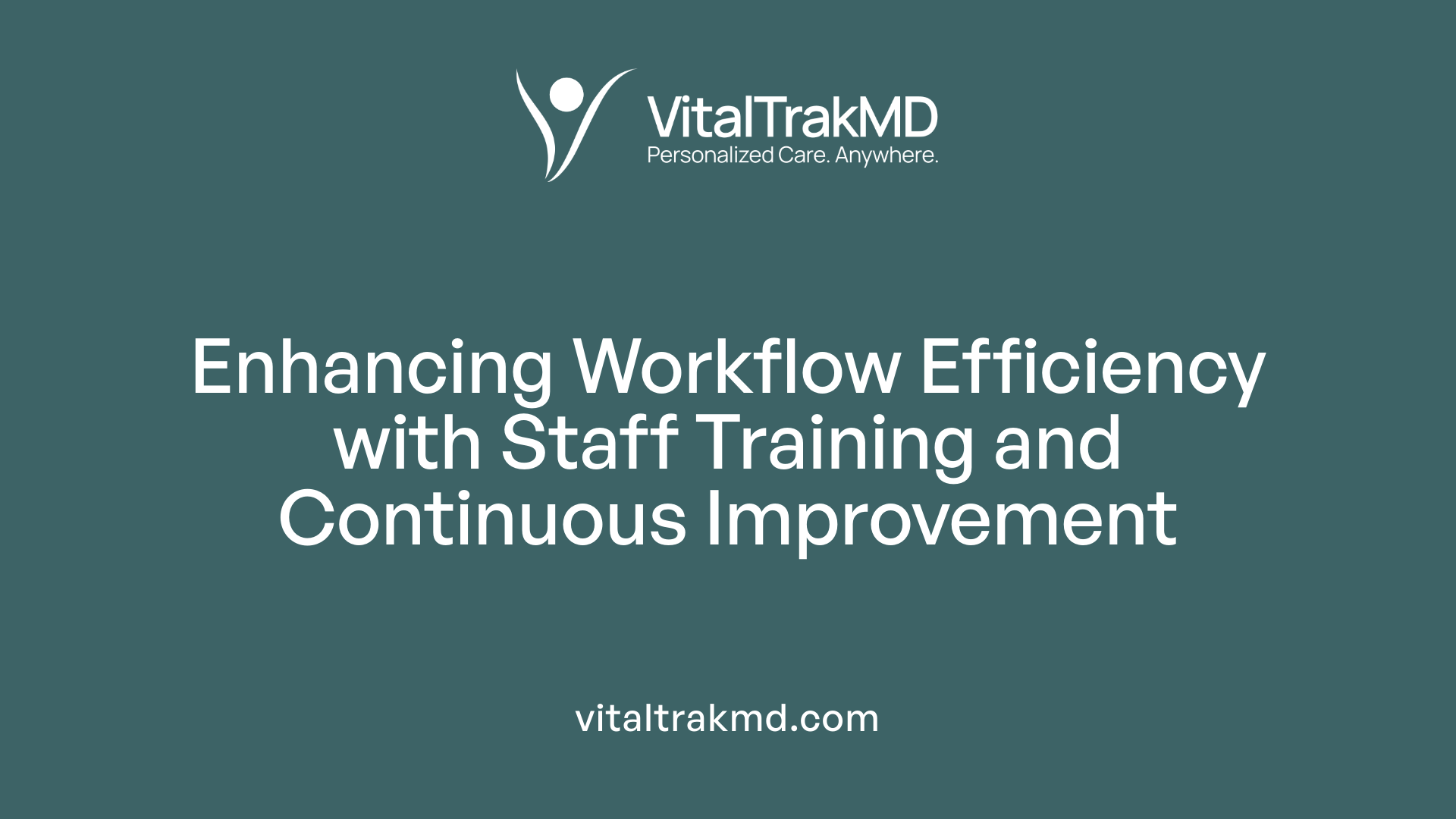Reducing Long Wait Times at Clinics Through In-Home Visits

Addressing Long Waiting Times in Modern Healthcare
Long wait times at healthcare clinics have become an escalating issue, negatively impacting patient satisfaction, clinical outcomes, and healthcare system efficiency. To counteract these challenges, healthcare providers are increasingly integrating innovative strategies such as in-home visits, telemedicine, and advanced technological tools. This article explores how these approaches contribute to reducing wait times, improving access, and enhancing overall patient experience.
The Impact of Telemedicine on Waiting Times

How does telemedicine contribute to reducing clinic wait times?
Telemedicine significantly cuts down the time patients spend waiting for healthcare services. It does this by offering more flexible scheduling options and increasing the capacity for virtual consultations, which helps smooth out patient flow and alleviates congestion in physical clinics. Virtual visits allow patients to receive care without the need to physically travel to a healthcare facility, saving time and reducing delays.
A study conducted by RelyMD highlights that 88.2% of its patients wait less than 10 minutes for a telemedicine visit, demonstrating the efficiency of remote consultations. In comparison, traditional in-office visits can involve an average wait time of nearly 20 minutes.
Remote care also enables quicker assessment, diagnosis, and prescription processes. Patients managing chronic conditions benefit from timely check-ins and monitoring, avoiding long delays associated with in-person appointments. These rapid response capabilities help prevent unnecessary hospital visits, streamline patient care, and move healthcare delivery towards a more efficient model.
Furthermore, virtual platforms reduce no-show rates and unnecessary emergency visits—71% of which are avoidable, according to Truven Health Analytics—by providing easier access and convenient scheduling. This efficiency translates into shorter waiting periods and better resource utilization.
Overall, telemedicine improves healthcare access, reduces congestion, and shortens wait times, all of which contribute to higher patient satisfaction and optimized healthcare operations.
In-Home Healthcare Models: A Paradigm Shift
What is the role of in-home healthcare models in reducing patient wait times?
In-home healthcare models, including telemedicine, home visits, and hospital-at-home programs, significantly contribute to decreasing patient wait times. By delivering care directly at the patient’s location, these approaches reduce the reliance on traditional in-clinic visits, which often involve long delays.
Studies show that telehealth, a major component of in-home care, can reduce wait times by approximately 25.4 days. In certain specialties, this reduction is even more notable, with some reports indicating a decrease of around 34.7 days.
Home visits conducted by healthcare staff, such as nurses or physician assistants, enable prompt responses to complex health needs. These visits facilitate immediate medication adjustments, timely assessments, and help manage chronic conditions without the delay of scheduling traditional appointments.
Moreover, hospital-at-home programs provide hospital-level care in the patient's residence. This approach not only shortens hospital stays but also decreases outpatient clinic congestion, allowing more patients to receive necessary care quickly and efficiently.
Overall, these models streamline healthcare access, improve coordination, and substantially cut down waiting times. They are particularly vital for patients with mobility issues, those living in rural areas, or individuals requiring urgent but non-emergency care.
In summary, in-home healthcare initiatives are transforming traditional service delivery by making care more accessible and reducing the time patients wait for vital health services.
Technological Innovations to Improve Patient Flow
What technological solutions can improve patient flow and reduce patient wait times?
Implementing modern technology in healthcare settings can significantly enhance patient flow and cut down on wait times. One effective method is the use of online appointment scheduling systems, allowing patients to select, modify, or cancel appointments conveniently. This flexibility reduces scheduling conflicts and decreases no-show rates. Automated reminders sent via SMS, email, or phone help patients remember their appointments, ensuring higher attendance and smoother scheduling.
Digital queue management tools are also pivotal. These systems enable staff to monitor patient wait times accurately and allocate resources dynamically. For instance, apps like Qless display real-time estimated wait times and allow patients to join virtual queues, minimizing physical crowding and waiting. Integration of electronic health records (EHR) with these scheduling tools simplifies administrative workflows, prevents double bookings, and ensures access to essential patient data instantly.
Moreover, telehealth platforms are expanding care access, especially for follow-up visits or managing chronic conditions remotely. Remote monitoring devices and health apps enable continuous health data collection, reducing unnecessary clinic visits and enabling quicker responses to patient needs.
In summary, combining appointment automation, queue management, EHR integration, and telehealth solutions can streamline healthcare operations. These technological advances not only reduce patient wait times but also enhance overall care efficiency and patient satisfaction.
In-Home Visits and Preventive Care: Addressing Barriers and Delays

What role do in-home healthcare models play in reducing patient wait times?
In-home healthcare, including telemedicine, home visits, and hospital-at-home programs, significantly contribute to lowering patient wait times. By delivering care directly to patients' homes, these models reduce the need for physical visits to clinics and hospitals. For example, telemedicine alone has been shown to cut wait times by an average of approximately 25.4 days, making access faster, especially in specialties such as dermatology and chronic disease management.
Home visits conducted by trained healthcare professionals help address complex health needs more promptly. These visits enable timely medication management, routine checkups, and care coordination without requiring patients to wait for in-office appointments.
Hospital-at-home initiatives extend care into the patient's environment, providing hospital-level treatments at home, which reduces hospital bed occupancy and shortens hospital stays. This approach alleviates outpatient congestion and eases scheduling bottlenecks in traditional settings.
Overall, embracing in-home healthcare strategies tackles many logistical barriers, accelerates diagnosis and treatment, and results in meaningful reductions in waiting periods across health services. These approaches not only improve convenience but also enhance overall care efficiency and patient satisfaction.
Optimizing Appointment Scheduling and Patient Access
What best practices can clinics adopt to improve appointment scheduling and patient access?
Improving appointment scheduling and enhancing patient access require a comprehensive approach that focuses on streamlining processes and utilizing modern technology. One effective strategy is employing system-wide capacity management, which involves analyzing demand patterns and aligning resource allocation to meet patient needs effectively.
Process reengineering plays a crucial role, with practices like open access or same-day scheduling allowing patients to book appointments on the day they call, significantly reducing wait times. Smoothing patient flow through team-based workforce optimization—such as having dedicated personnel for triage and quick appointments—can further enhance efficiency.
Data-driven analytics are essential; clinics should monitor workflows continuously, using metrics like wait times, no-show rates, and appointment availability to inform adjustments. Integrating tools like electronic scheduling platforms, automated reminders, and telehealth options can increase convenience for patients while decreasing administrative burdens.
Technologies such as online self-scheduling portals, mobile apps, and virtual consultations help patients choose times that fit their schedules, reducing last-minute cancellations and no-shows. Additionally, integrated referral management systems streamline patient referrals and follow-ups.
Engagement with patients and families through surveys and advisory councils helps gather feedback on access barriers and preferences. Transparent communication about wait times and delays builds trust and reduces frustration.
Finally, continuous assessment and behavioral change strategies, such as incentives for punctuality and clear communication, support sustained improvements.
By adopting these best practices, clinics can significantly reduce wait times, improve patient satisfaction, and enhance overall care delivery.
Systematic Interventions and Healthcare System Redesign
What systematic interventions are effective in decreasing clinic wait times?
Reducing wait times in healthcare clinics requires a comprehensive approach that combines process improvements, technological solutions, and team-based care models.
One highly successful strategy is open access scheduling, which allows patients to be seen on the same day they call for an appointment regardless of reason. This method has been shown to cut primary care wait times significantly, often by as much as 32 days, leading to quicker access and higher patient satisfaction.
Implementing team-based care involving nurse practitioners, physician assistants, and triage nurses also enhances clinic efficiency. These teams help streamline patient flow by handling lower acuity cases, managing follow-ups, and prioritizing urgent cases through triage systems. Such approaches not only reduce delays but also improve clinical outcomes and patient experiences.
The use of telehealth services further supports timely access to care. Virtual consultations, e-referrals, remote patient monitoring, and asynchronous provider-to-provider communications can diminish outpatient wait times by an average of 25.4 days. These services are particularly valuable for patients in rural or underserved areas, eliminating travel and scheduling barriers.
Complementary measures such as dedicated follow-up calls, automated appointment reminders, and email-based communication help reduce no-shows and late arrivals, optimizing the use of clinician time. Demand-capacity analysis, lean management principles, and Six Sigma methodologies ensure that resources are aligned with patient needs, minimizing waste and bottlenecks.
By integrating these interventions within a cohesive care system, healthcare organizations can significantly decrease clinic wait times, improve access, and elevate the overall quality of care.
| Intervention Type | Impact on Wait Times | Additional Benefits |
|---|---|---|
| Open access scheduling | Reduces primary care wait times by up to 32 days | Enhances patient satisfaction and access |
| Team-based care involving nurse practitioners | Improves patient flow; decreases delays and improves satisfaction | More efficient use of clinical staff |
| Telehealth services | Cuts outpatient wait times by an average of 25.4 days | Better access for rural and remote populations |
| Demand-capacity analysis and lean methods | Optimizes resource utilization; reduces waste and bottlenecks | Increases operational efficiency |
These strategies showcase how a multi-faceted approach is essential for combating longstanding delays in healthcare access. Effective leadership commitment and continuous process review are vital to sustain improvements and provide patients with timely, quality care.
Addressing Challenges in Telehealth Adoption

What are some common challenges faced in implementing telehealth solutions?
Implementing telehealth solutions presents several obstacles that healthcare providers and patients must navigate. A major hurdle is technological barriers, such as poor internet connectivity and limited access to suitable devices like computers or smartphones. These issues are especially pronounced in rural or underserved areas, where reliable high-speed internet may not be available.
Another significant challenge is the limited ability to perform physical examinations remotely. This can affect the accuracy of diagnoses and the appropriateness of treatments, particularly for conditions that depend heavily on hands-on assessments or diagnostic tests.
Cybersecurity and data privacy concerns also complicate telehealth adoption. Protecting sensitive patient information from breaches requires robust security measures, which can be costly and complex to implement.
Legal and regulatory issues further hinder widespread use. Variations in state laws, licensing restrictions, and reimbursement policies create complexity for providers operating across different regions.
Disparities in access and patient perceptions towards telehealth are additional factors. Some patients and providers may be skeptical about the effectiveness of virtual care or lack the digital literacy necessary to utilize these services effectively.
Finally, the cost of establishing and maintaining telehealth infrastructure can be high, posing financial challenges, especially for smaller practices and community clinics.
Overcoming these barriers requires concerted efforts in technology improvement, regulatory reform, patient and provider education, and investment in digital infrastructure. Addressing these challenges will be crucial to fully realizing telehealth’s potential to reduce wait times, improve access, and enhance patient satisfaction.
Managing Patient Expectations and Clinical Workflow Efficiency

How can healthcare providers effectively manage patient queues to reduce wait times?
Efficient management of patient queues is crucial for reducing wait times and improving overall patient satisfaction. Healthcare providers can adopt smart queue management systems that automate patient flow, utilize real-time updates, and enable digital check-ins. These tools help streamline operations and prevent overcrowding.
Implementing online appointment booking and automated reminders ensures patients arrive on time and reduces the likelihood of no-shows. Real-time availability updates on digital displays or mobile apps help patients plan their visits better and set clear expectations.
Transparent communication is vital; notifying patients of expected wait times and delays fosters trust and reduces frustration. Additionally, continuously analyzing workflow data allows healthcare facilities to adjust staffing levels and optimize patient flow dynamically.
Solutions such as DocTrue integrate features like virtual queues, digital check-ins, and real-time displays. These innovations make the process smoother, cut down unnecessary waiting, and elevate the patient experience.
Use of patient engagement tools like secure messaging and digital check-ins
Patient engagement tools also play a significant role in managing wait times effectively. Secure messaging platforms enable providers to communicate appointment updates, answer questions, and provide instructions remotely.
Digital check-in kiosks or mobile apps allow patients to confirm their arrival, update personal information, and access wait time estimates before entering the clinic. These tools reduce congestion at reception and help staff prepare in advance.
Providing platforms for pre-visit instructions and follow-up messages can further improve patient flow by ensuring patients are ready and informed about their appointments.
Staff training and continuous process improvement
Equipping staff with proper training on new technologies and workflow strategies ensures smooth implementation. Regular process reviews and quality improvement initiatives can identify bottlenecks and inefficiencies.
Engaging the entire healthcare team in ongoing training fosters a culture of continuous improvement, which is essential for adapting to changing demands.
Using data gathered from workflow systems, clinics can conduct Plan-Do-Study-Act (PDSA) cycles to test modifications that enhance efficiency.
This focus on staff preparedness and process refinement ultimately leads to shorter wait times, better patient outcomes, and higher satisfaction—highlighting the importance of cohesive teamwork and dedication to ongoing enhancement.
Integrating Innovations for a Faster, Patient-Centric Healthcare System
Reducing long wait times at clinics is essential for enhancing patient satisfaction, clinical outcomes, and overall system efficiency. The convergence of in-home healthcare, telemedicine, advanced digital tools, and systematic process redesign offers a comprehensive approach to tackle this challenge. These innovations not only improve access and speed but also optimize resource utilization and patient engagement. As healthcare continues to evolve, embracing these strategies and fostering continuous improvement will be vital for delivering timely, efficient, and patient-centered care in the future.
References
- How Telemedicine Can Improve the Reputation of the Waiting Room
- The Promise of Telemedicine & Shorter Appointment Wait Times
- Can We Eliminate Waiting Times From Healthcare Forever?
- Shortening wait times for appointments: Patient access strategies for ...
- Interventions to reduce wait times for primary care appointments
- Telehealth: Technology meets health care - Mayo Clinic
- 7 Effective Strategies to Minimize Clinic Wait Times
- The high cost of long wait times - Phreesia
Recent articles
Want to Feel Better and Live Healthier?
Join hundreds of patients taking control of their health with personalized care that fits their life – not the other way around.
Rated 4.8/5 by 32+ customers







